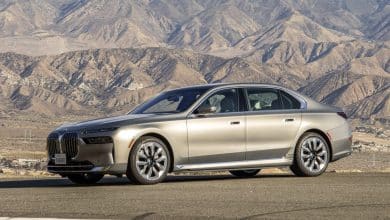Modern vehicles are subject to several safety tests to be legally compliant on the road. These examinations, more refined and effective than ever, highlight the shortcomings and strengths of products on the road to determine their degree of protection.
L’Insurance Institute for Highway Safety (IIHS) is an independent, nonprofit scientific and educational association in the United States dedicated to reducing deaths, injuries, and property damage from motor vehicle crashes. A reference in the field, the IIHS regularly reveals significant security flaws. The organization has just completed a study that affects vans, and this study mentions that occupants seated in the 2e row of seats are at much greater risk of serious trauma than those in the front.

A renewed test
The Insurance Institute for Highway Safety (IIHS) updated its moderate overlap frontal crash test late last year. The test now makes it possible to more realistically recreate the impact and force that a car experiences during a front-end collision.
To bring its books up to date, the organization repeated the exercise with several vehicles to see if they still complied with occupant protection requirements. The IIHS nevertheless found that 4 minivans, namely the Chrysler Pacifica, the Kia Carnival, the Toyota Sienna and the Honda Odyssey, had difficulty protecting passengers located in the 2e row of seats.

These vehicles, mainly used to transport children, were subjected to the new test which adds a mannequin the size of a small woman or a 12-year-old boy in the seat directly behind the driver. The IIHS explains that for a product to earn a passing grade, the rear-seat occupant must not be subjected to excessive risk of injury to the head, neck, chest or thigh when of the impact.
None of the 4 vans managed to achieve a sufficient result. The Pacifica, Carnival and Sienna garnered a “marginal” rating, while the Odyssey earned a “poor” rating. The IIHS also points out that, with the exception of the Sienna, these minivans do not have a seat belt reminder for passengers in the 2e row of seats.

Corrections required
The Institute emphasizes that van manufacturers must prioritize the protection of rear occupants. In the Toyota Sienna, the rear extra slid forward under the lap belt, while the shoulder belt moved toward the neck. In the Kia Carnival and Chrysler Pacifica, the seat belt exerted too much force on the model’s chest.
The IIHS adds that, alarmingly, the Pacifica’s side curtain did not deploy during testing. In the Odyssey, the forces exerted on the head and neck were even greater, and the dummy’s head came too close to the back of the front seat despite the seat belt.

“The restraint systems of the 4 vehicles make the occupant of the 2e row of seats vulnerable to chest injuries, either due to excessive forces on the belts or due to improper belt positioning. This is concerning because these injuries can be life-threatening,” said Jessica Jermakian, vice president of the IIHS.
The organization, however, emphasized that, despite these results, the rear seat remains the safest place for children, and that the use of a booster seat is recommended for as long as possible. On a more positive note, all 4 vehicles received a “good” rating for front passenger protection. The IIHS said the vehicles will be subject to new examinations as soon as corrections are made.












